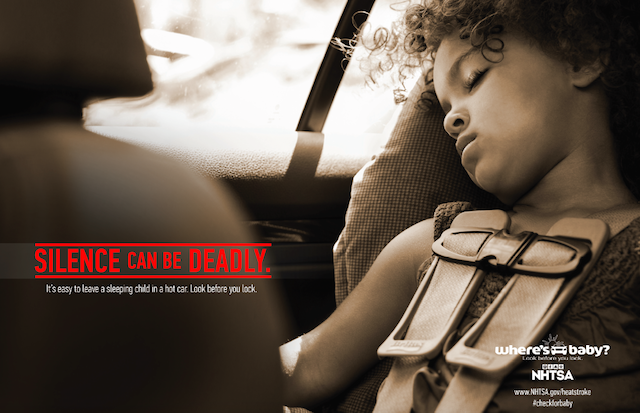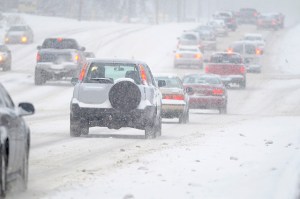Although the continual evolution of safety features has made vehicles significantly safer, one car-related fatality statistic remains: heatstroke deaths for children and pets.
On average, 38 children die in hot cars each year. On a typical 80-degree summer day, the interior temperature of a vehicle increases by 20 degrees in only 10 minutes and reaches a deadly 109 degrees in 20 minutes. On hotter days, it is common for temperatures in a parked car to reach 120-140 degrees, and cracking the windows has little to no effect.
Heatstroke is the result of the internal body temperature reaching 104 degrees. Children and pets are much more susceptible due to their thermoregulatory systems; the body temperature of children rises at a rate 3 to 5 times faster than adults.
Heatstroke Causes
Heatstroke deaths primarily occur due to one of three scenarios:
- 20% of deaths result when a caregiver knowingly leaves a child in the car (typically to run a quick errand or finish a nap). The majority of the temperature rise occurs within the first 15 to 30 minutes, and caregivers assume that cracking the windows is enough to cool and ventilate the vehicle. Never leave a child or pet alone in a parked car for any amount of time.
- 53% of deaths are caused by a caregiver forgetting the child in the vehicle. It should be noted that 46% of the deaths related to children forgotten in vehicles involved a change in the family’s routine where a different caregiver was responsible for dropping off the child at daycare. These tragedies most often occur on weekdays. AAA recommends drivers safely store their cell phone, work bag, or purse in the back seat when child passengers are present as another reminder to check the backseat.
- 26% of cases are related to the child gaining access to the vehicle without adult supervision. An innocent game of “hide and seek” can lead to such tragedies. Often the child enters the vehicle and closes the door or trunk and cannot get out. It is important for drivers to lock their vehicles in driveways and garages to prevent these occurrences.
Signs of Heat Stroke
When a child’s core temperature rises, they will begin to experience a number of symptoms. These can include dizziness, disorientation, agitation, confusion, sluggishness and even hallucinations. Other signs of heat stroke include hot dry skin that is flushed but not sweaty, rapid heart beat and loss of consciousness.
If the child is in pain or not responsive, get the child out of the car and call 911 immediately. If you’re able to, spray the child with cool water. Stay with them until help arrives.
Heatstroke Prevention
The Alliance of Automobile Manufacturers and Association of Global Automakers have voluntarily agreed to integrate “rear seat reminder” warning systems in vehicles to alert caregivers to check the back seat for child passengers in every car sold in the U.S. by the 2025 model year. The agreement includes many large automakers, including domestic manufacturers General Motors, Fiat Chrysler Automobiles and Ford, and foreign-based companies such as Honda, Nissan and Toyota. Several manufacturers have already included the technology.
Just 10 minutes can be the difference between life and death, or a healthy child and one who has suffered brain damage. Any parent or caregiver, even a very loving and attentive one, can forget a child is in the back seat. The National Traffic Safety Administration urges caregivers to “look before you lock” and ask themselves “where’s baby?”.
AAA urges anyone who finds a child or pet alone in a locked car to call 911 immediately and take action to remove the passenger.
2 Thoughts on “Vehicular Heatstroke Deaths up in Summer”
Leave A Comment
Comments are subject to moderation and may or may not be published at the editor’s discretion. Only comments that are relevant to the article and add value to the Your AAA community will be considered. Comments may be edited for clarity and length.













An important topic that is poorly handled here. How on earth can Maine, one of our most northern states have a higher rate of heat stroke than many of its more southern neighbors? Second, why does the article not even mention the possibility of leaving the windows open – especially a sunroof windown if you have one. I do this for my dog all the time.
Hi Emily, thanks for reading and for your comments. Believe it or not, Maine does have a higher heat stroke rate than many states to its south (Source). Its important to remember that heat stroke can occur even in fairly mild temperatures. You bring up an interesting point about windows. Unfortunately, opening a window has been found to do very little to lower temperatures in cars. Here is a study published in a pediatric medical journal that details this. Every leading safety organization states that children or pets should never be left alone in a car.